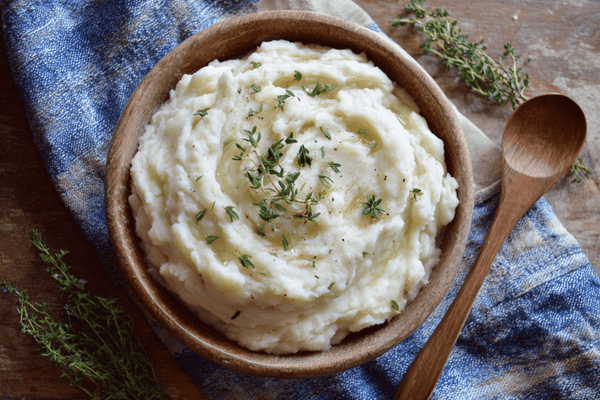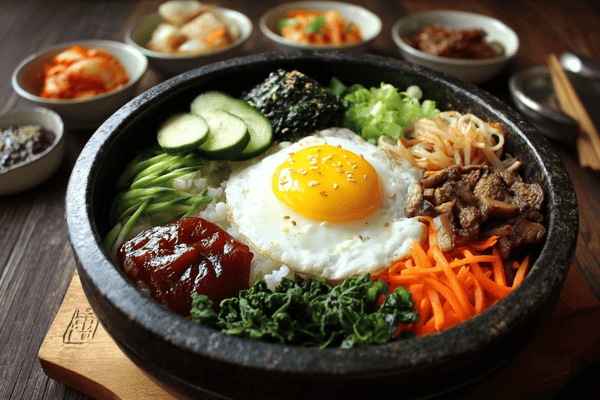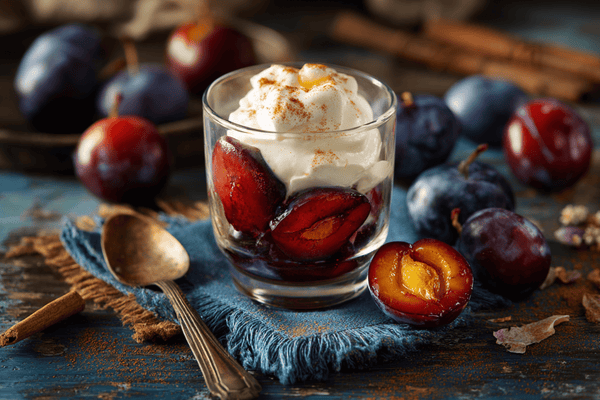 We spend a lot of time using, researching and just thinking about Japanese knives. But there’s one knife that doesn’t come up as much as others and that’s the yanagiba. For Japanese chefs working in a sushi or sashimi restaurant, then the yanagiba will be one of your most well-used tools. But for the rest of us domestic chefs, we’ll normally be found weidling a santoku or nakiri knife.
We spend a lot of time using, researching and just thinking about Japanese knives. But there’s one knife that doesn’t come up as much as others and that’s the yanagiba. For Japanese chefs working in a sushi or sashimi restaurant, then the yanagiba will be one of your most well-used tools. But for the rest of us domestic chefs, we’ll normally be found weidling a santoku or nakiri knife.So what is the yanagiba, what is it used for and do you really need one?
If you’re unfamiliar with this type of Japanese kitchen knife then don’t worry. We're going to cover everything you need to know in this guide and help you decide whether it’s a knife that’s worth adding to your collection.
Table of contents
- What Is a Yanagiba?
- Kensaki Yanagiba
- Takohiki Yanagiba
- Sakimaru Yanagiba
- Fuguhiki Yanagiba
- What Are Yanagiba Knives Used For?
- Is the Yanagiba the Same as the Sujihiki?
- How Do You Cut With a Yanagiba Knife?
- Sujihiki
- Hirazuki
- Usuzukuri
- Sogi Zukuri
- Should I Buy a Yanagiba Knife?
- Choose the Right Type of Steel
- Consider the Handle
- Consider the Blade Length
- How Much Do You Want to Pay?
- Final Thoughts
What Is a Yanagiba?
 The Japanese word yanagiba translates to mean willow leaf blade. We love that the names of Japanese knives describe exactly what they are and how they look. In this case, it won’t come as a surprise that the blade is shaped like a willow leaf. However, some people call it the shobu knife as the blade could also be compared to the leaves on the flowering plant, iris.
The Japanese word yanagiba translates to mean willow leaf blade. We love that the names of Japanese knives describe exactly what they are and how they look. In this case, it won’t come as a surprise that the blade is shaped like a willow leaf. However, some people call it the shobu knife as the blade could also be compared to the leaves on the flowering plant, iris.The yanagiba knife can come in a range of sizes from relatively small 21cm knives through to large 36 - 39cm versions. It really depends on the type of yanagiba you’re looking at. However, in all cases, these are single bevel blades.
There are actually several different types of yanagiba knives so before we start looking at what this knife is best used for, I wanted to talk a bit about the variations.
Kensaki Yanagiba
The kensaki yanagiba is very similar in appearance to the standard version of this blade. The main difference is that its tip is angled and this is ideal for making very precise cuts. This type of tip is called a reverse tanto and the knife is sometimes known as the kiritsuke yanagiba.Like the regular version of this knife, the kensaki yanagiba is a single bevel blade and it can measure anywhere between 24cm and 33cm in length. They are usually a little heavier than a normal yanagiba.
Takohiki Yanagiba
Unlike the reverse tip of the kensaki, the takohiki, which is an octopus knife, has a squared, blunt tip. This is ideal for tackling ingredients like octopus which tend to be much denser.These knives are from the Kanto region of Japan and are usually much lighter than the standard version. What’s more, the blade isn’t usually as long and could be as small as 21cm. That said, there are some takohikis that are as long as 39cm.
Sakimaru Yanagiba
This is another type of knife that is used for cutting dense ingredients like octopus and is very common in Japan. One of the main benefits of this type of knife is that it gives a really precise and clean cut which is why it is very commonly used in sushi and sashimi making.But unlike the previous type of knife that has a square tip, the sakimaru features a rounded tip and the edge of the blade is slightly curved. This makes it easily distinguishable between other types of yanagiba knife but just as before, the size can vary greatly between 21 cm and 39 cm.
Fuguhiki Yanagiba
The fuguhiki knife is one that is used to prepare more delicate ingredients such as blowfish and flounder. The blade is much thinner and considerably more flexible than some of the other yanagiba knives which makes it a lot easier to cut thin slices of fish.
Why is this important, you might ask? Well, presentation is everything in Japanese cuisine and chefs will often cut the fish so thin that you can see the design of the plate underneath it.
This type of yanagiba tends to be a little smaller than others and can range between 18cm and 36cm.
What Are Yanagiba Knives Used For?
As you can probably tell from the information above, the yanagiba knife is primarily used for cutting fish. In Japanese cuisine, there are a lot of dishes like sashimi and sushi that require the chef to precisely slice raw fish and these knives are ideal for creating smooth, even slices. This is important as it ensures the texture and flavour of the fish is preserved.One of the things you will notice about the yanagiba is that the blade is typically quite long. The reason for this is that it makes it a lot easier to move the blade through the ingredient in one motion. There’s no risk of tearing the flesh which could interfere with the flavour, not to mention the appearance of the dish.
I’ve already mentioned that these are single bevel knives and this means that only one side of the blade is sharpened. But that still means that you get an incredibly sharp edge that’s able to perform some amazingly accurate cuts.
On the opposite side of the blade to the cutting edge, you’ll find that the yanagiba features a non stick surface. When cutting through raw fish, you won’t have to face food getting stuck to the knife which will hinder your speed.
Is the Yanagiba the Same as the Sujihiki?
For anyone that has been considering buying a yanagiba knife, they’ll probably have heard of another type of knife called the sujihiki. There’s a lot of confusion as to whether these knives are the same and while there are some similarities, they are actually different knives.The main difference is that the sujihiki is a type of double bevel knife whereas the yanagiba is always single bevel.
As we mentioned earlier, Japanese knives are named to reflect how they look or what they’re used for and in this case, the word sujihiki translates to mean flesh slicing knife. While they are ideal for cutting fish, their long, thin blades are also perfect for cutting other types of meat. Some would compare them to a western carving knife although the sujihiki is far sharper and more accurate.
However, if you’re looking for a knife to specifically cut fish then you’d always go for the yanagiba as it’s just so much better suited to the task at hand. Moreover, the design of the knife allows for a smooth, clean cut with as little damage to the fibres of the food as possible. Of course, because this is a single bevel blade, it may take some time to get used to using it. But that’s all part of the fun.
How Do You Cut With a Yanagiba Knife?
In Japan, a knife is considered to be an extension of the chef’s arm. For this reason, and many others, trainee chefs are expected to learn various cutting techniques and perfect them before they can start preparing food.So, when it comes to using your yanagiba knife, you’ll need to familiarise yourself with the various cutting methods. Here are some of the most common ways to use a yanagiba.
Hirazuki
This word means to pull cut in a vertical fashion. It’s a type of perpendicular cut that chefs use when working with fatty fish like salmon or tuna. It’s ideal when you want to make a slightly thicker cut.
Usuzukuri
This is similar to the above type of cut but translates to mean a thin vertical pull cut and is often used when the chef wants to make extremely thin slices. It’s a popular technique for cutting white fish as it will show off how translucent the meat is without affecting its bouncy texture.
Sogi Zukuri
This type of cut refers to pull cutting at an angle and delivers a really clean cut. The chef holds the knife at a 45 degree angle and this is something that you’ll often see when they are preparing almost all types of sushi.
Should I Buy a Yanagiba Knife?
We love having a kitchen that is stocked with every utensil we could ever need but there are some things that you might be able to do without.If you’re wondering whether you should buy a yanagiba knife but never prepare fish then the answer is no, you don’t need one.
However, if you love fish and want a knife that’s going to allow you incredible precision and a clean cut that, up until now, you’ve only ever dreamed of then we’d highly recommend buying a yanagiba. Of course, you’re going to want to know how to find the best yanagiba knife so here are my top tips when making a purchase.
Choose the Right Type of Steel
 When it comes to buying any type of knife, there are typically two choices of material. These are stainless steel and high carbon steel. In traditional Japanese knifemaking, they would always use carbon steel but many manufacturers go for stainless steel now as it tends to be cheaper. But they both have their advantages and disadvantages aside from price.
When it comes to buying any type of knife, there are typically two choices of material. These are stainless steel and high carbon steel. In traditional Japanese knifemaking, they would always use carbon steel but many manufacturers go for stainless steel now as it tends to be cheaper. But they both have their advantages and disadvantages aside from price.Carbon steel is a type of steel that, unsurprisingly, has carbon added to it. This material is a lot easier to sharpen and will retain its edge for much longer so they’re generally easier to maintain. That said, you will need to do other maintenance such as oiling your blade as this metal is prone to rust. Plus you should be very careful about how you use it since carbon steel is harder and therefore more brittle.
It’s also worth mentioning that carbon steel will usually end up with a patina. This won’t affect the use of the knife as long as it’s properly cared for but some people do not like the appearance this gives.
Stainless steel contains chrome and this stops the material from corroding so if you want something that’s easy to care for and won’t rust, this might be what you’re looking for. What’s more, a stainless steel blade is softer and therefore not as delicate or prone to chips as its carbon steel counterpart.
The bad news is that these knives are much more difficult to sharpen and you won’t be able to achieve the razor sharp edge you would with carbon steel. Moreover, stainless steel won’t hold its edge for as long so you’ll need to get the whetstone out more often.
Consider the Handle
It’s always the blade that gets attention but your yanagiba knife handle is also something that you should think about. After all, you don’t want something that feels unbalanced or uncomfortable, especially if you’re going to get a lot of use out of the knife.One of the things we’d ask you to think about is how you’d normally grip the knife. While yanagiba knives are Japanese, there are some that come with a western style handle and these are ideal for people who only hold the handle and don’t put a finger on the blade.
However, if you prefer to use a pinch grip then we’d recommend going for a yanagiba that has a Japanese style handle as this will be much more comfortable.
There’s really no right or wrong because it all comes down to personal preference and what feels good to you.
Finally, where the handle is concerned, it’s important to think about what material you’d prefer. Some people like the look of wood but this does require more careful maintenance. Plastic is far easier to care for but may not be as comfortable to hold.
Consider the Blade Length
 As we have discussed, yanagiba knives can come in a wide range of lengths. Bigger doesn’t always mean better, even if a large knife looks impressive. The problem is that a bigger blade can be more difficult to control and this can make using it less safe and less effective.
As we have discussed, yanagiba knives can come in a wide range of lengths. Bigger doesn’t always mean better, even if a large knife looks impressive. The problem is that a bigger blade can be more difficult to control and this can make using it less safe and less effective.It’s important to choose something that you feel you can easily work with. Also note that longer blades tend to be more flexible which again can impact control.
We’d think about the type of fish you are looking to cut and the size. If you’re cutting larger fish into thick slices then something long would probably be better. But for smaller cuts, you may be able to get away with a shorter blade.
How Much Do You Want to Pay?
As with anything in the world, yanagiba knives are available for every budget. There are some out there that cost hundreds, even thousands of pounds whereas others don’t even break double figures.What we would say is that you should always buy the best yanagiba knife that you can afford. It’s tempting to go for something because it’s cheap but that often means that you are not getting the same quality.
In Japan, knifemaking is an artform so if you purchase a hand crafted yanagiba from a Japanese blacksmith then you’re going to pay a very high price. However, the tool will stand the test of time and produce results that you’d never see when using a mass-produced knife you brought from Amazon.
Final Thoughts
In Japan, there are lots of different types of knives and each is designed for a different purpose. The yanagiba isn’t a knife that’s often the centre of attention but it’s one of the most important Japanese knives, especially for sushi and sashimi chefs.These knives come in various different types, depending on the type of fish you want to cut. They have long, thin blades that are designed for precision and if you regularly prepare fish then they’d make a great addition to your kitchen.


